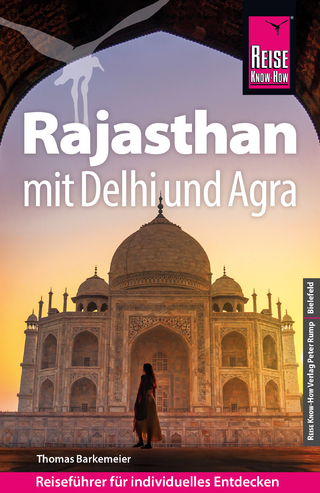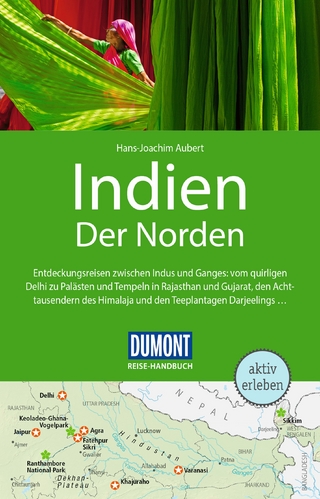
The Invention of Rivers
University of Pennsylvania Press (Verlag)
978-0-8122-4999-6 (ISBN)
While da Cunha's vision of rivers is a global one, he takes an especially close look at the Ganges, as he traces the ways in which it has been pictured, mapped, surveyed, explored, and measured across the millennia. He argues that the articulation of the river Ganges has placed it at odds with Ganga, a "rain terrain" that does not conform to the line of separation, containment, and calibration that are the formalities of a river landscape. By calling rivers into question, da Cunha depicts an ecosystem that is neither land nor water but one of ubiquitous wetness in which rain is held in soil, aquifers, glaciers, snowfields, building materials, agricultural fields, air, and even plants and animals.
Printed in full color and featuring more than 150 illustrations, The Invention of Rivers proposes rain, or "the rainscape," as an alternative starting point for imagining, understanding, and designing human habitation.
Dilip da Cunha is an architect and planner working out of Philadelphia and Bangalore and a John Simon Guggenheim Memorial Foundation Fellow. He teaches at Harvard University and Columbia University and is author with Anuradha Mathur of Mississippi Floods: Designing a Shifting Landscape; Soak: Mumbai in an Estuary; and Design in the Terrain of Water.
Preface
Introduction. River Literacy
Chapter 1. Alexander's Eye and Ganga's Descent
I. COURSE
Chapter 2. River of Rivers
Chapter 3. Separating Ganga
II. SOURCE
Chapter 4. Waters of Eden
Chapter 5. Calibrating Ganga
III. FLOOD
Chapter 6. Ocean of Rain
Chapter 7. Containing Ganga
Conclusion. River Colonialism
Notes
Index
Acknowledgments
* * * * *
Preface
Working in the Lower Mississippi River Valley in the 1990s, I began to suspect that the line separating water from land exists by choice, a choice not in where it is seen in a shifting and dynamic terrain but in the fact that it is seen at all. At the time, Anuradha Mathur and I were investigating the line that held the Mississippi River to a place in the vast alluvial plain of its making. We traced this line to the early years of European occupation and forward from there to the nineteenth and twentieth centuries when it was enforced by a hydraulic regime of levees, spillways, jetties, revetments, and cutoffs alongside a culture of prediction and modeling to prevent flood. We glimpsed the possibility at the time that Native Americans with whom Europeans clashed lived outside this "landscape of flood." Their habitation was not necessarily on riverbanks exposed to the flows and floods of an entity limited by a line; it was rather in an open field of wetness that rose and fell. In other words, their difference went further than seeing the Mississippi differently; they saw a different Mississippi, a Mississippi that was not a river to begin with. To me, this was not a fact to verify; it was an opportunity to entertain in design. Irrespective though of what it was, it began weakening the grip that the river and by extension, the line separating land from water, had on my imagination.
In the years since Mississippi Floods was published, our practice has taken us to diverse places, all of which threw the line between land and water into question, whether it was in a riverbank, a coastline, or an edge of an impoundment of rain. In India, I found that this line does not just result in the exceptional flood; it results in an everyday chaos that passes for the informal, kitsch, and underdevelopment. It did not take long to see that as in the United States the line transgressed is not simply a line drawn; it is a line imposed. Furthermore, this line does not simply separate water from land; it creates water and land on either side of it as entities that can be commodified and as such coveted, made scarce and violated. Indeed, it is hard to miss the infrastructural presence of this line beneath the many pressing problems in India that are generally attributed to poverty, a colonial history, overpopulation, illiteracy, and so on. It is also hard to miss the fact that people need to be taught to see this line, draw it, and respect it. In other words, the line between land and water is not taken for granted.
For the last five years I have sought to understand what it takes to separate water from land on the earth's surface, to naturalize this separation, and to impose it on people who today suffer the increasingly drastic consequences of its violation, particularly by the rains of the monsoon that refuse containment. The outcome is this book. It is an appreciation of the river as a remarkable feat of design made possible through the drawn line, a line that has had nothing less than nature constituted for its success, allowing it to recede into the ordinary, the everyday, and everything. Questioning it is not easy. It requires more than a critical stance, more than simply seeing things differently; it requires another ground all together, one that offers different things.
I found this other ground in the rain of the monsoon, a wetness that is everywhere before it is water somewhere (separate from land). It does not run into rivers, nor is it harvested to assist a river-inspired infrastructure of pipes and canals; it rather operates a world without rivers, holding in everything across air, earth, and life before, if at all, flowing to the sea. I present it in this book as a world constituted in another moment of the hydrologic cycle when watery stuff is precipitating, seeping, soaking, evaporating, and transpiring in ways that defy delineation. Its otherness affords a worthy vantage from which to engage the world of rivers. As such, even as this book is about the making of rivers, it is also about the ground of habitation afforded by rain. Rain is another ground for constituting the past, present, and future.
In the Ganges I found an interesting case study of precipitation that does not seem to want to form into a river or perhaps even be a river. Like other names on the Indian subcontinent that are classified as rivers, it keeps defying its so-called banks, erasing efforts to control its course and nullifying plans to clean its watery stuff. Many will balk at the idea of questioning the riverness of the Ganges. After all, there is little doubt that millions of people worship the Ganges as a river, rely upon a river for their infrastructural needs, and describe a river that is the lifeline of a unique civilization. However, is it possible that they look upon something that was introduced to the subcontinent, something that enforces a particular language of habitation with terms such as land and water that were not shared by people who lived here? The question is worth asking given that people in India apply the name Ganga, which is seen by scholars as the vernacular equivalent of Ganges, not just to a river but also to a ubiquity that they venerate through the icon of a goddess, a ubiquity that may well be a rain-driven wetness. Indeed, there is much between the lines of texts, behind the scenes of habitation, and in the interstices of everyday life in India to suggest that this Ganga continues to exist. However, it does so in the shadows as an "other" ground of experience with a difference that refuses to conform to rivers and river-based ideas such as the city, history, and development.
By questioning the place to which a name refers and venturing another with its own terms of difference, this book follows in the tradition of my previous works with Anuradha Mathur, Mississippi Floods, Deccan Traverses, and Soak. All of them put another place to a name. In Soak, for example, we presented Mumbai as an estuary where the sea and monsoon are insiders against the conventional appreciation of it as an island where they are outsiders with the monsoon an annual visitor. The latter was how British colonists saw Mumbai and how it continues to be researched, historicized, governed, and planned. Positing an estuary was not just for the sake of the city's future, which to us would be better served in the face of climate change and sea-level rise; it was also for the sake of its past and present, which we suggested is better understood on the complex and fluid ground of an estuary. Besides, from our engagement with Mumbai, it seemed very likely that people here see their place in terms of an estuary, terms that have been lost in translation to the language of an island. Soak basically reinforced the idea that emerged in Mississippi Floods and was confirmed in Deccan Traverses, our project on Bangalore, which is that European colonialism did not just impose another way of seeing and knowing place; it imposed another place.
It is then with an empathy for irreconcilable difference that this book raises the possibility that India is a rain-driven wetness rather than a land drained by rivers, which is how maps, textbooks, histories, plans, ecologies, and everyday conversation project it. Unlike places we have sought to reimage and reimagine in the past, the imposition in question here reaches far beyond the colonizing events of the last few centuries to possibly Alexander the Great, who came across the mountains from the rain shadow of Central Asia in the fourth century BCE with a geographically disciplined view of the earth's surface divided between water and land with a line that could be drawn in a map. It set the stage for rivers on the subcontinent and arguably laid the groundwork for the waves of colonization that followed, all of which survived and thrived on keeping water contained with a line. Today, the authority of the line continues in place even as it is increasingly out of place in everyday life, particularly during each monsoon.
Is it possible for India to recover an appreciation for Ganga's Descent? The phrase recalls the fall of rain. But as this book seeks to make clear, it also necessarily calls for a defiance of Alexander's Eye, an eye that awaits the clarity of a fair-weather moment to separate water from land. Rain and river, in other words, are not merely two moments in the water cycle; they are moments that begin two inquiries, two infrastructures, two modes of design. The more one is pursued, the more it diverges from the other.
| Erscheinungsdatum | 30.10.2018 |
|---|---|
| Reihe/Serie | Penn Studies in Landscape Architecture |
| Zusatzinfo | 17 illus. |
| Verlagsort | Pennsylvania |
| Sprache | englisch |
| Maße | 254 x 216 mm |
| Themenwelt | Reiseführer ► Asien ► Indien |
| Geisteswissenschaften ► Archäologie | |
| Naturwissenschaften ► Geowissenschaften ► Hydrologie / Ozeanografie | |
| ISBN-10 | 0-8122-4999-2 / 0812249992 |
| ISBN-13 | 978-0-8122-4999-6 / 9780812249996 |
| Zustand | Neuware |
| Haben Sie eine Frage zum Produkt? |
aus dem Bereich


